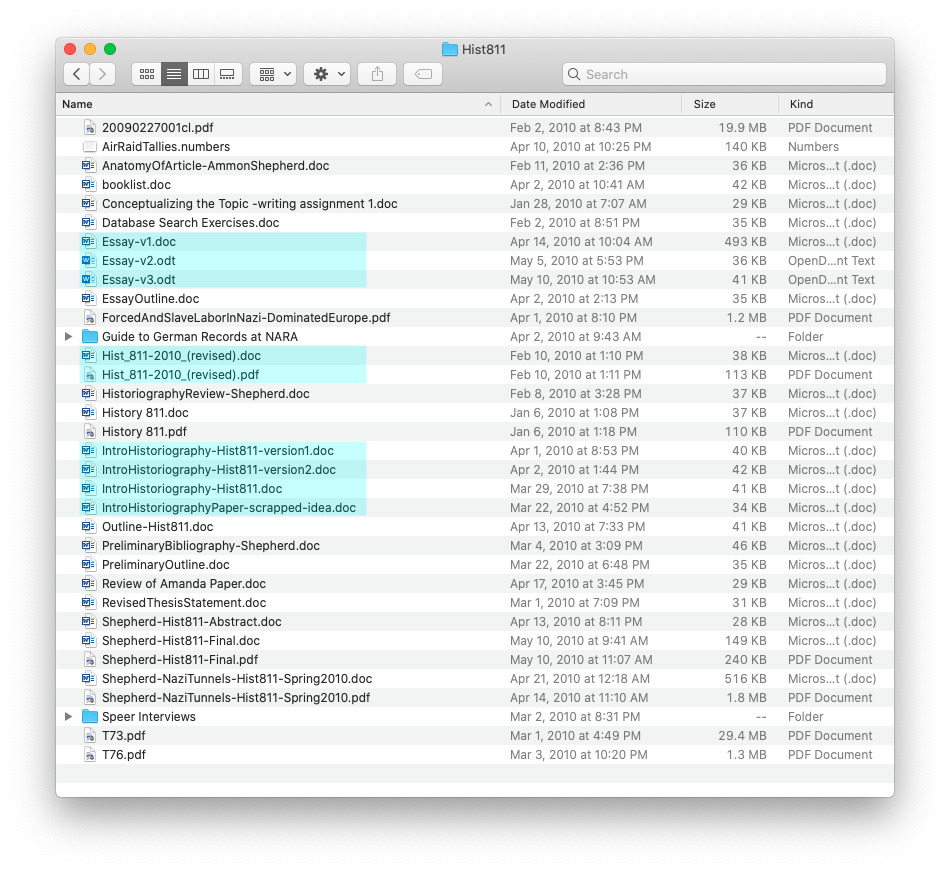
Introduction
Git can be scary. I get it. It took me years before I actually used Git. I worked as a systems administrator and ran web servers. We had many developers programming websites and applications; and they all used Git. I would pretend I knew how to use it, but I never had. I was scared I would mess things up, ruin the code, or delete everything and look like a fool. But this is exactly what Git was built to take care of. Fortunately, I forced myself to learn it through reading through lots of articles, books, documentation, support websites, and playing around with Git for personal projects. There are definitely ways to obliterate your work, but if you learn the why and the how, you can use Git safely. Just like driving a car. ;)
Why do you need Git?
Creating content can be messy. Naming files with dates, keeping track of different versions of files, keeping copies of everything “just in case”. This was especially true for me while I was in graduate school studying history. I had files with names that reflected who had reviewed the file, dates of major revisions, and files with names like “paper-final”, “paper-final-for-reals”, “paper-last-final”. My files were a mess.

Now imagine writing a paper or coding a program in collaboration with other people. How in the world would you keep all those changes and files in a manageable workflow? That’s where a version control system, like Git, comes in very handy. But Git is really a content management system that happens to be really good at tracking versions. Most version control softwares before Git would keep track of the changes in each file. Git does it a bit differently. Git takes snapshots of your entire working directory whenever you want, effectively capturing all your work at any given point.
Git takes snapshots of your working directory whenever you want. Every snapshot holds all of the files in the entire project at that point.
The Theory behind Git
This introduction to Git takes a different approach than most. Instead of just showing you a bunch of different commands to enter into your command line terminal, this tutorial shows you how you would do things without Git, by hand. This process makes the reason for the commands and the workflow very clear. Others have done this before, but their analogies dive too deep for the beginner. (See here for the inspiration for this tutorial and my personal path to Git enlightenment: Curious Git, and Git Parable) This introduction is meant for the beginner to Git. If you’ve never used Git before, this will help you understand how and why it works, and then give you the few commands you’ll need in your daily workflow.
You’re going to see how to build the functionality of Git by hand, as if you were writing a book. This has the benefit of showing how Git can work with non-software coding scenarios, and shows the steps and logic behind why Git works the way it does. You can easily imagine writing software instead, and I’ll throw in some coding examples here and there. This portion of the tutorial should be read only. You shouldn’t (or don’t need to) follow the steps here. They are just for illustration and explanation. You won’t really want to do it like this anyway; you’ll want to just use Git! The second part of this tutorial will walk you through the steps to use Git in a simple daily workflow, either by yourself or working with others.
NEXT: A Git Analogy